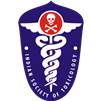Vol.18 Issue No.2 (2022): Journal of Indian Society of Toxicology
Status of Toxicology in CBME Curriculum
Prateek Rastogi
In the MBBS Curriculum subject of toxicology is primarily associated with Forensic Medicine teaching, naming the speciality as Forensic Medicine and Toxicology. Toxicology is an important speciality which should not be confused only with forensic toxicology, instead, there is environmental toxicology, pharmacological toxicology, bio toxicology and so on.
The earlier medical curriculum didn't classify toxicology into various subheads instead there was a broad component of toxicology which was covered under teaching hours of the forensic medicine department with no clear demarcation of mandatory weightage to the subject and with little or no practical exposure of students to toxicological scenarios. With the introduction of competency-based medical education or CBME subject of forensic medicine is now covered over 2 professional years i.e., phase 2 and phase 3 covering 14 competencies and 162 sub-competencies. Out of which 6 competencies (FM8-FM13) and 21 sub-competencies are exclusively dedicated to toxicology. In competency number FM 14, 4 sub-competencies are dedicated to toxicology taking the number from 21 to 25 and the proportionate representation of toxicology in the forensic curriculum to 15 percent.
CBME curriculum divides the toxicology syllabus into general toxicology, chemical toxicology, bio-toxicology, pharmaceutical toxicology, environmental toxicology, and socio-medical toxicology. In addition, there are planned sessions on the examination of clinical cases. All the above-mentioned changes are welcome approaches for toxicology teaching, but the question is could all these suggested changes practically possible to be implemented in the current scenario. Another question that arises is whether the suggested changes are adequate to give this subject its due.
With respect to 1s t query related to implementation, it is suggested that integrated and innovative teaching methods by combined approach from forensic medicine, pharmacology, general medicine, and emergency medicine be employed. In medical college setups where faculty and infrastructure crunch are a perennial problem added with other departmental and administrative responsibilities of teaching faculty, is integration and innovation practically possible or will it remain a possibility only on paper?
The issue that whether these changes as suggested in the CBME curriculum are adequate or inadequate, has always been a topic of debate with differing viewpoints from experts. During the 16th Annual National Conference of the Indian society of Toxicology at Mangalore the above issues were discussed at length during guest lectures as well as during panel discussions. It is possible to uplift the subject in practical settings only when we as medical teachers do justice to teaching toxicology in medical colleges which in turn is only possible when the curriculum is strong enough to cover all aspects of toxicology along with provision for sufficient teaching hours and assessment methodologies. The discussions will continue but we as fraternity members should work together for the upliftment of the speciality in teaching as well as in practical scenarios.



